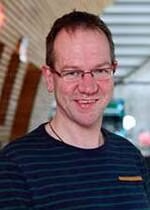In november 2017, the Dutch parliament tabled a motion. This motion argued that although there is a lot of existing information on the visitors of cultural performances, exhibitions and festivals, information about the cultural non-visitor is lacking. Despite the lack of information of the cultural non-visitors, identifying these cultural non-visitors could be seriously beneficial to cultural parties. This report by Prof. Koen van Eijck and Prof. Evert Bisschop-Boele provides an overview of research about cultural participation, and identifies the least active cultural participants in the Dutch society; the so called cultural non-visitors.
Results of the research
In this report, Prof. Evert Bisschop-Boele and Prof. Van Eijck painted a picture of what is known about the cultural non-visitor, and how the cultural range could be enhanced. They discuss how several attempts to broaden the interest could be shaped in various ways. Education, adapting the available cultural products and events to the taste of the non-visitors, different kinds of dialogue and co-creation with a specific audience have been applied for several years now, with a fluctuating amount of success. Finally, they raise several questions about the governmental support and financial support of the arts and culture sector in the Netherlands.
Impact on society
The report offers suggestions for enhancing cultural participation by distinguishing between the way cultural institutions might develop separate approaches for current visitors, interested non-visitors and non-interested non-visitors. As such, it might make it easier for people to relate to the arts in a manner that is meaningful to them.
On the other hand, rather than just offering practical suggestions as most studies do, the report reflects on the necessity and desirability of taking such measures. It turns out that the Netherlands are doing really well when it comes to cultural participation (both active and passive). The report therefore explains why there are no ‘quick wins’ available, since much has already been done to attract new audiences.
Prof. Evert Bisschop-Boele and Prof. Van Eijck thus argue that aiming for (even) more cultural participants, the cultural sector would need to re-think their policy aims and broaden its definition of art forms worthy of government support.
